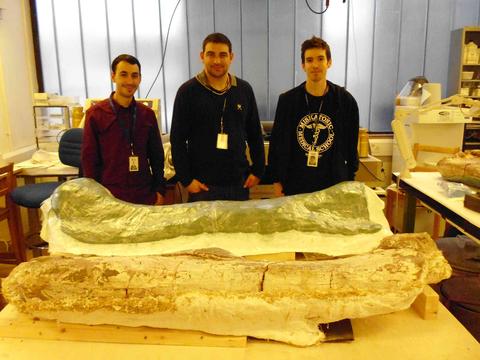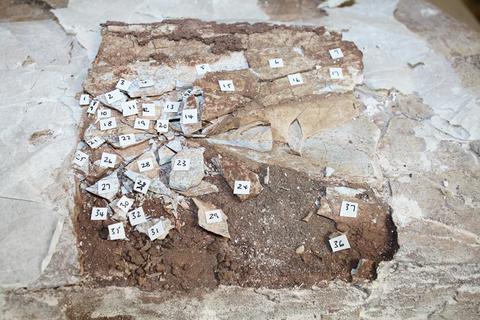We're going to need a bigger box....
Pictured: the contents of ‘loose bones’ bag 1. Not shown: the same again from ‘loose bones’ bag 2….
Pictured: the contents of ‘loose bones’ bag 1. Not shown: the same again from ‘loose bones’ bag 2….
Now we have put on line the CSIP environmental standards what are peoples thoughts on them? we have worked hard and want to develop them further
Not much activity on this blog but lots in the lab. We’ve been very busy….
The Niger Sauropod project is nearly at an end! We’ve fully prepared all the bones that were wrapped in plaster jackets, and have moved onto the ‘float bags’. ‘Float’ is the term given to the fossils which are found loose on the surface, rather than being buried in the rock. We had a wealth of float material to work through, but most of this is done now, with just two large bags remaining (simply labelled ‘bones’).
Continuing on where we left off last time, this post will attempt to cover how we make a protective support jacket for very large or heavy specimens.
For really weighty specimens, like our dinosaur’s limb bones, we create a sort of supportive shell for the bone from a substance called Epopast, an epoxy resin/glass fibre paste. Epopast is pretty nasty stuff so to mix up a batch we need to get kitted out in full PPE (personal protective equipment)- goggles, mask, lab coat, apron, gloves and gauntlets (arm guards).
Firstly, apologies for the lack of updates recently- I blame Christmas. Secondly, for those that don’t know, these blog posts are longer than they look! Click ‘read more’ for the full post.

The current volunteer fossil prep team (left to right, Matthew, Craig and Kieran) with sauropod limb bones. Photo by Mark Graham

Fragmented bone surface on a sauropod femur. Photo and labelling by Mark Graham.
Lydia Tappin a long term volunteer in the TCC has recently completed a Vodafone 'World of Difference' sponsored project in the Conservation Centre. Working on the museums modern anthropology collections she spent a 4 months conserving and reboxing these sensitive specimens.
First off, a big thanks to anyone who came along to Science Uncovered- it was a huge success, with over 10,000 visitors attending the event (including a lucky few who had the opportunity to go behind the scenes and visit us here in the Conservation Centre).
This Friday is Science Uncovered, the once-a-year special event where the Natural History Museum goes all out to give our visitors a really special night. This year will be the biggest so far with over 400 scientists taking part! There’ll be all sorts of talks, tours, shows and cocktails to enjoy, starting from 4 PM and finishing at midnight.
